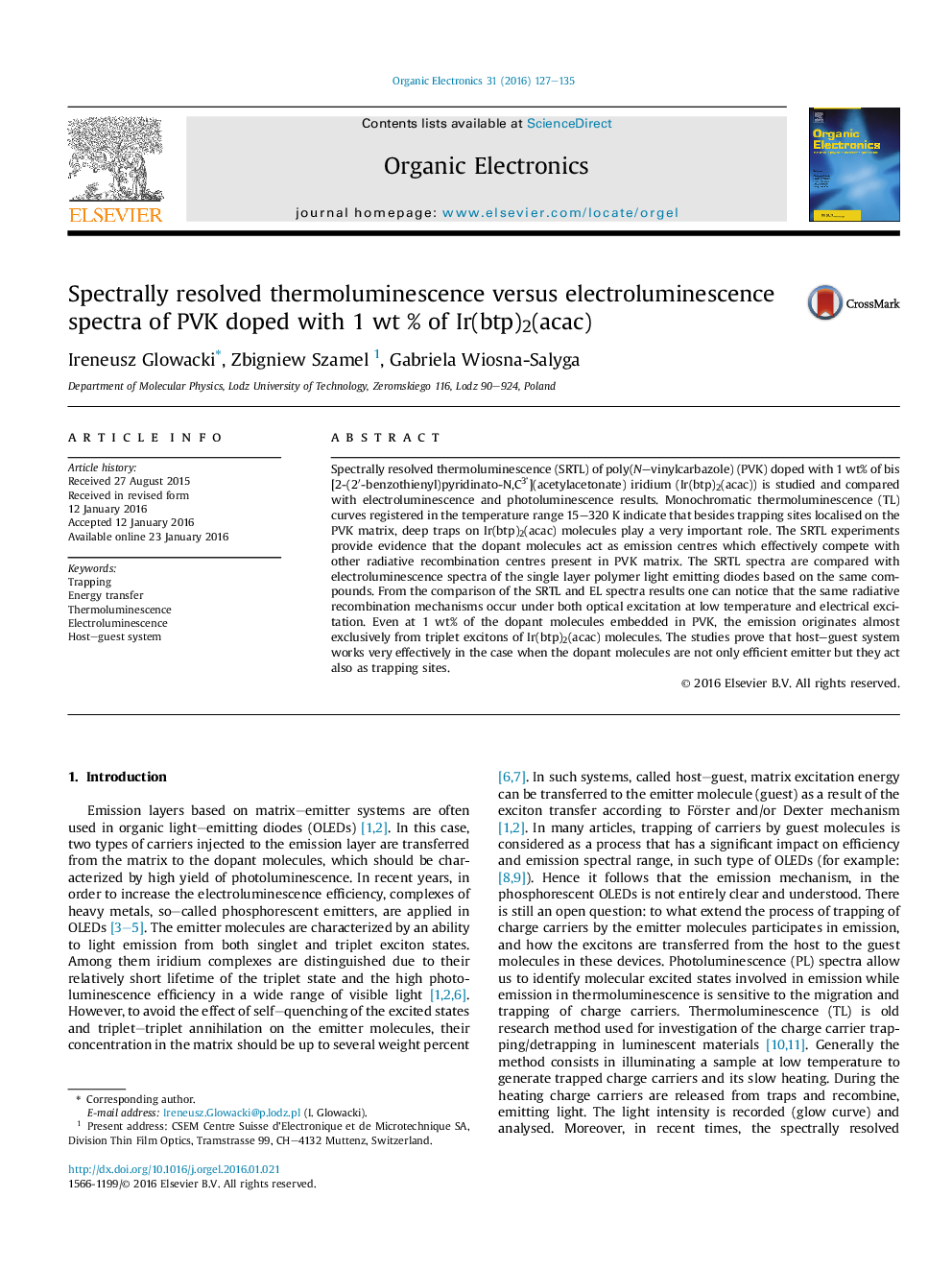| Article ID | Journal | Published Year | Pages | File Type |
|---|---|---|---|---|
| 1267040 | Organic Electronics | 2016 | 9 Pages |
•Spectrally resolved thermoluminescence as a method of identification of traps and emission centres in EL systems.•Predominant contribution of the deep traps localised on Ir(btp)2(acac) molecules.•The presence of Ir(btp)2(acac) creates a new channel for the energy transfer.•The charge carriers released from different type of traps generating excitons on Ir(btp)2(acac).•Comparison of EL and SRTL spectra showing the radiative recombination mechanisms after optical and electrical excitation.
Spectrally resolved thermoluminescence (SRTL) of poly(N–vinylcarbazole) (PVK) doped with 1 wt% of bis[2-(2′-benzothienyl)pyridinato-N,C3’](acetylacetonate) iridium (Ir(btp)2(acac)) is studied and compared with electroluminescence and photoluminescence results. Monochromatic thermoluminescence (TL) curves registered in the temperature range 15–320 K indicate that besides trapping sites localised on the PVK matrix, deep traps on Ir(btp)2(acac) molecules play a very important role. The SRTL experiments provide evidence that the dopant molecules act as emission centres which effectively compete with other radiative recombination centres present in PVK matrix. The SRTL spectra are compared with electroluminescence spectra of the single layer polymer light emitting diodes based on the same compounds. From the comparison of the SRTL and EL spectra results one can notice that the same radiative recombination mechanisms occur under both optical excitation at low temperature and electrical excitation. Even at 1 wt% of the dopant molecules embedded in PVK, the emission originates almost exclusively from triplet excitons of Ir(btp)2(acac) molecules. The studies prove that host–guest system works very effectively in the case when the dopant molecules are not only efficient emitter but they act also as trapping sites.
Graphical abstractFigure optionsDownload full-size imageDownload as PowerPoint slide
